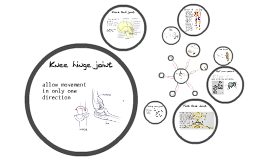human skeleton
Transcript: the human skeleton by.Ayman.E made on 4/6/2020 what even is a skeleton what is a skeleton what is a skeleton? a skeleton is a internal framework of the body. the skeleton is divided into the axial skeleton and appendicular skeleton. what does the skeleton help you with? In your body , the skeleton works very closely with your muscular system to help you move around, without our bones\skeleton, we would be like an octopus, and really wiggly. what does my skeleton help me with? what does the skeleton help you with your skull how does your skull help Your skull is the hard skeleton inside your head, it protects your brain, from getting hurt. about your skull Your is a part of your skeleton, that forms your head. fun fact fun fact: When you touch your head and you feel something hard, well that`s your skull, its hard so that it could protect your brain your arm`s bone your bone inside your arm helps you move your arm move, for throwing something, and reaching to get something. your arm`s bone+hand`s bones your hand`s bones your hand`s bones help you to grab things and touch things, and throwing. your leg`s bones+ feet your leg`s bones, help you walk, run, and jump. they also move, when you kick something. you feet`s bones your leg`s bones+feet`s bones your feet`s bones, help you kick, and helps you taking steps how many bones you have. it is composed of around 270 bones at birth, this total decreased to around 206 bones by adulthood after some bones get fused together. how many bones you have? bone count for rib cage the human rib cage is made up of 12 paired rib bones, each are symmetrically paired on the right and left side. bone count for ribbs spine spine bone count the human spine is made up of 33 bones -7 vertebrea in the cervical region. nothing Events arm+hand bone counter There are 64 bones in the upper extremity. they consist of 10 shoulder and arm. arm+hand bone counter bone counter for hands hand bone counter the skeleton of the human hand consists of 27 bones: the eight short carpal bones of wrist are organized into a proximal row. bone counter for wrist bone counter for wrist there are 8 small carpal bones in the wrist that are firmly bound in two rows of four bones each. Special dates Special dates Name Name Years with company Department Birthday Department what is the bone made of? the bone is made of mostly collagen, growing tissue, collagen is a protein that provides a soft framework, and calcuim phospnate is a mineral that adds strength and hardens the framework. What is the bone made of? February March January THATS ALL FOR NOW, GOODBYE, AND HAVE A NICE DAY:]

















